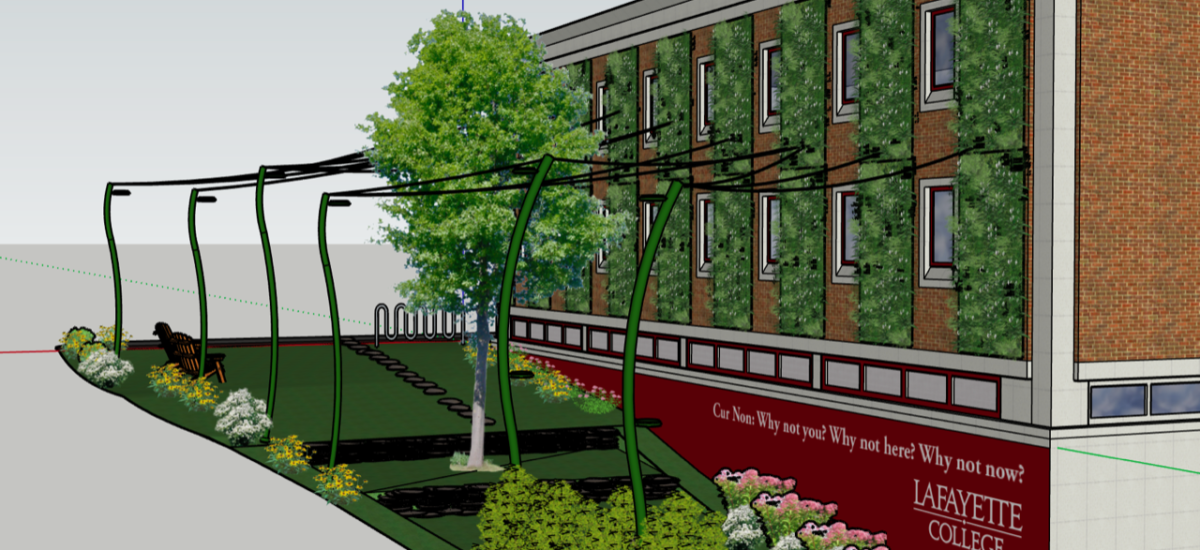Lafayette Gardens is a unique and memorable space designed to facilitate education, recreation, and place-making opportunities on campus. It consists of a living wall and an adjacent communal garden space that will be located on the northeast side of Acopian Engineering Center (AEC) and occupying the 0.08-acre area that extends toward Markle Hall. Initially inspired by previous Engineering Studies capstone projects, a team of five Engineering Studies students developed Lafayette Gardens for their Sustainable Solutions course project. By incorporating technological, artistic, and environmental aspects into the design, the team has created a welcoming place for all members of the Lafayette College community.
The living wall, constructed by LiveWall, will run across the brick exterior of the northeast side of Acopian in a vertical column pattern. Underneath it, where there is currently a bare concrete triangle, a mural will display Lafayette College’s motto: “Cur Non? Why not you? Why not here? Why not now?”. The surrounding ground space will contain sets of 6’ diameter pollinator gardens as well as teaching and gathering areas. Seating options for Lafayette Gardens include Adirondack chairs and terrace seating, the latter of which will require modifications to the existing slope. The edge of the grass will be lined with six thin, curved spires that connect back to the living wall via wires. These spires and wires will help create a sense of calm enclosure and add three-dimensional definition to the space. Our research found that the project, considering construction and materials, would be in the range of $160,000 to $240,000, with the difference depending on plant choices, degree of LiveWall options, and degree of landscaping intensity.
The new space will provide a range of benefits to Lafayette College that expand its educational and social capabilities. In an environmental context, the incorporation of another green structure on an academic building will contribute to the college’s Climate Action Plan. Additionally, the inclusion of various native plants will help rehabilitate the existing environment and increase biodiversity by creating a space that attracts birds, bats, and various pollinators. Construction of a living wall also has technical benefits, such as improving the thermal abilities of Acopian, and health benefits resulting from improved air quality and helping with stress relief. The space will not only improve the atmosphere of Acopian but that of the college too.
The Lafayette Gardens fully embodies the college’s core values by encouraging collaboration, inclusivity, sustainability and education through its design. It is the team’s hope that Lafayette College develops a multidimensional space such as this and continues to refer to the design as it strives to continue creating a united college community.
Thank you for your time and support!
